

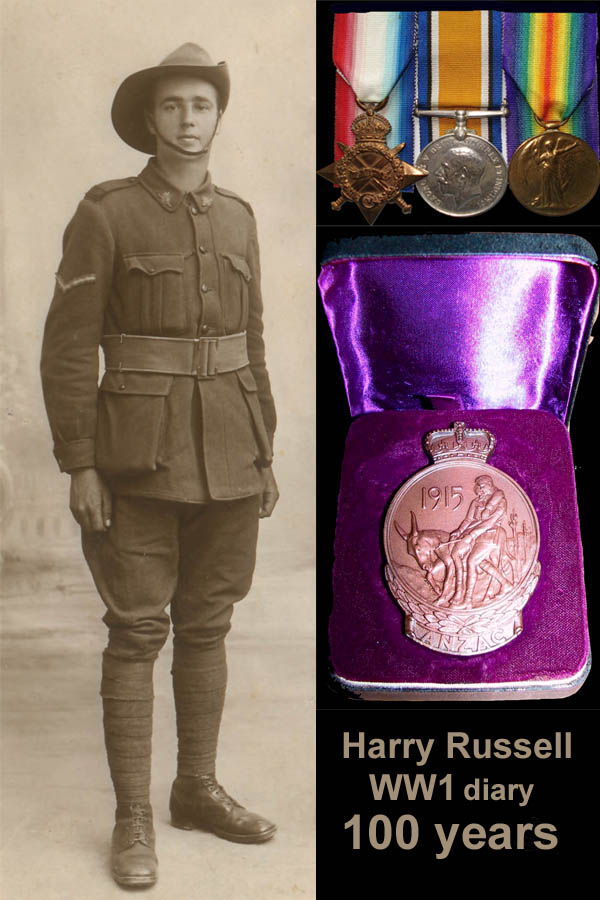
View this page at 1024x768 This page last updated January 2014.
Please contact me for comment or if you can help with extra information.
The origin of the name?
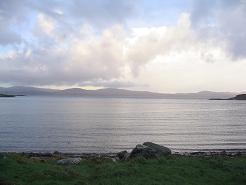
The Sound of Jura from Carsaig
Want to know more about the Scottish Island of Jura?
|
(Official No. 105977) Built under yard no.305 by Russell & Co., Port Glasgow for the Sound of Jura Ship Co. Ltd. (C.A. Walker) Glasgow. Rigged as a four masted barquentine - delivered in Feb. 1896. Specifications - Steel 1113grt - 210ft4in x 35ft7in x 19ft4in. 
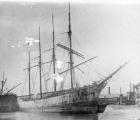


|
|
Some record of the movements of the Sound of Jura have come to light with the process to digitise all old Australian newspapers. 100% to all involved in providing this invaluable resource. Leaving Newcastle with a cargo of coal for Callao (near Lima Peru) June 21st, arriving August 27th. Arrived London August. Sailed for Callao with coal September. Sailed with coal for Guayaquil. Arrived Newcastle November from Guayaquil. Leaves Newcastle with coal for Caldera. |
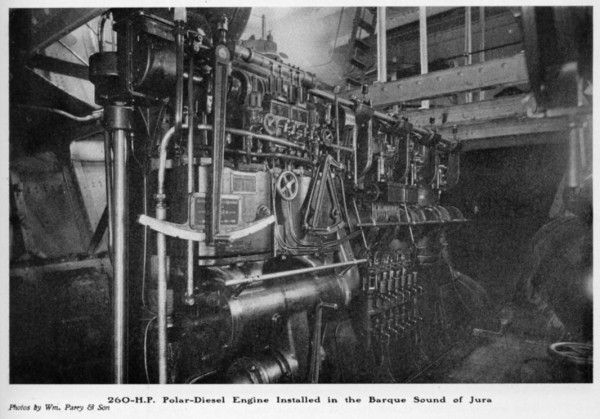
Read more about the installation of the diesel here
And much more detail about the 'Fram'
More reading on the early development of the marine diesel
|
The 'Sound of Jura' was purchased by the newly formed Southern Whaling & Sealing Co. in 1911, to provide a role as a cargo transporter, and was probably chosen, as her design enabled her to transport bulk whale oil and other provisions for the proposed whaling operations.
|
As just seen, on the outward voyage from Glasgow, the engine had exploded, killing the assistant engineer. The apparent first port of call was Port Alexander, in Angola, where the Southern Whaling & Sealing Co. had a whaling base. However, she had a brief stopover at the nearby port of Mossamedes instead, before continuing on to South Georgia which she reached on the 13/2/1913. After a relatively brief stopover where she took on her cargo of bulk whale oil, she left for her return trip on the 17/3/1913.
'24-3-13 Noon - While the crew were furling the foresail a heavy squall struck the ship & caused her to lurch heavy to leeward, & the foremast buckled right over at the truss-band, throwing the men from aloft. Killing William Robertson, O.S.; & injuring severely J. Swanton, boatswain; T. Stone, sailor; J. Peterson, sailor; R. Paterson, sailor; A. Rasmussen, sailor; A. Noble, sailor; R. Felp, sailor; & J. Hendick, O.S. We got them into the forecastle & attended to them to the best of our ability. George Rochester - Master'.
There are several conflicting accounts of what exactly happened after that, but this newspaper article which is attached to the rear of an oil painting of the 'Sound of Jura' owned by a grandaughter of Capt. Rochester is probably the most factual, comparing it to detail in the ship's log and Lloyd's casualty reports for 1913.
Effects of heavy weather & beri-beri SOUTH SHIELDS _ FRIDAY ? (probably July 25th 1913) Then the following from the 1913 Lloyd's List casualty reports supplied by maritime expert David Asprey. St. Vincent 19 Jun: SOUND OF JURA. Foremast carried away 4 feet above deck, lost yard & rigging. Vessel has sustained no damage. Mast fitted in tank; the vessel cannot be repaired without discharging bulk oil; no spars available. Recommend that she should be towed to her destination. Crew down with beri-beri except Captain, First Officer. St. Vincent 2 July: SOUND OF JURA proceeded for Glasgow towed by tug SCHELDE. |
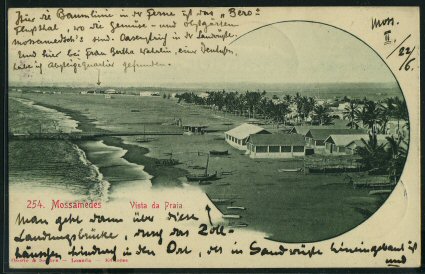
Click for larger view of Mossamedes
Fred's son Peter of Northumberland, England, kindly supplied the above image & details of his father's connection with the 'Sound of Jura'. He also supplied the image of SOJ which is the basis for the banner at the top of these pages as well as information obtained with an interview with Gillian Anderson of North Shields. Gillian's mother was Queenie, being daughter of Capt. George Rochester.
|
|
I have no details of the following two years, but almost certainly the 'Sound of Jura' returned to Prince Olaf Harbour, South Georgia. At the time there was no shore base there, and the processing of the whales was done by the factory ship 'Restitution'. |

The diary was made available by Rhona Casson of Scotland, the daughter of Hetty Rochester. Rhona also has an oil painting of the 'Sound of Jura' being towed from the port of North Shields. 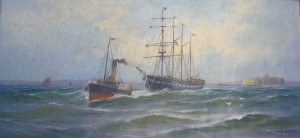
|
On this voyage to South Georgia, Capt. George Rochester was accompanied by his wife, Harriet, & daughters Hetty & Queenie. Hetty, then aged about fifteen, kept a diary of the voyage in an old unused 1908 Nautical Diary.
The 'Sound of Jura' left Port Alexander on 15th October 1915, probably with a cargo of whale oil as the diary entry on 13th October 'Dressed Kaffir's finger which had been squashed by a drum of oil weighing nearly half a ton' would indicate. She was towed to Cape Town by the 'Southern Sea' & 'Southern Sky' arriving on the 24th October.
During her stay of around 3 weeks at Cape Town, Hetty became friendly with the crew of the H.M.S. Glasgow, which was famous for the ultimate demise of the 'Dresden', on March 14th 1915, after the Battle of the Falklands. You can read her account of this stopover here.
After a 54 day journey from Cape Town, the 'Sound of Jura' arrived at South Georgia on 8th January 1916. She was towed into Leith Harbour by the 'Southern Sea'. A full account of the time spent here can be read on the Prince Olaf Harbour page. On Monday 6th March, the 'Sound of Jura' was towed from Prince Olaf Harbour by the 'Southern Sky' for her return journey to Falmouth with 9,100 barrels of whale oil. She arrived at Falmouth on June 3rd 1916, with the only notable occurrences being the death of Russian sailor D. Wikman on May 17th & the death of Swedish sailor Johann Sunblaad on June 1st.
Several days later, on 6th June she left for London, where she arrived on 11th June after being towed part of the way. On the 26th June she was towed all the way to Aberdeen, arriving on 2nd July, where she was soon to be fitted with a steam engine.
|
The port of Aberdeen had many suppliers of steam engines, and yards available to instal them, as they were involved in this practise with the herring steam drifters of the time. Steam drifters were built at many small boatyards around the Scottish coast, & towed to Aberdeen to have their engines & boilers installed, as well as having their steel deckhouses fitted.
Boilers by J. Lewis & Sons. Aberdeen. Length of engine room 21.3ft. After returning to her home port of North Shields, the 'Sound of Jura' left for her annual trip to South Georgia on 27th Sept 1916. Onboard as ship's carpenter was a Duncan McIntosh, whose family had been building fishing boats at the small village of Portessie, near Buckie for almost a century. Duncan had obtained his qualifications as a Shipbuilder at this yard in 1909. The voyage to South Georgia was undertaken with no stopovers in a little under three months, arriving on 18th December 1916. The shipping archives now refer to her as a steamship (formerly a sailer). This was not destined to be a lucrative whaling season for the SWSC, as their whaling factory ship 'Restitution', had foundered off the Scilly Isles whilst on the same voyage to South Georgia in November 1916. It could be assumed that the building of a shore station at Prince Olaf Harbour had been planned, and the 'Sound of Jura' was carrying a cargo of building materials along with her normal cargo on this outward journey. A little over three months later, the diary of Frank Hurley recorded on 29th March 1917 '--- Returned to our mooring alongside the Sound of Jura, an auxiliary barque anchored in Restitution Harbour. We were hospitably entertained by the Skipper, with whom we took and enjoyed meals, and inspected the large station now under construction for the Irvin Co.' Sound of Jura returned to South Georgia for the 1917 - 18 season, returning to Birkenhead via Montevideo, where Captain Rochester signed off on 11th August. That was to be her last voyage to South Georgia, as the Southern Whaling & Sealing Co. were taken over by Lever Brothers in 1919, and the ownership of the Sound of Jura was transferred to Irvin & Johnson (South Africa) Ltd. Captain George Rochester made his last trip on the Sound of Jura, when he took her to South Africa in 1919. He had been her Captain since 1911. Sound of Jura then took on a new role as a transporter to the Kerguelen Islands, which she fulfilled until 1927. After returning from Kerguelen in 1927 she was laid up in Saldanha Bay as a coal hulk, her register was closed in 1931 & she was sold to the Dunswart Iron & Steel Ltd. works in 1938 for demolition. A former Master, Captain Walmsley, lived aboard her for many years, keeping a large poultry farm aboard, the roosters waking the local residents each morning. The figurehead of the Sound of Jura survived, and can be seen on display at the Iziko South African Maritime Museum, Cape Town. |

For more info on steam engines CLICK HERE
|
|
'The Last of the Windjammers' - Lubbock 'Deep Water Sail' - Underhill Maritime History Archive - University of Newfoundland Rudder magazine Peter Henderson Mrs Rhona Casson - grandaughter of Capt. George Rochester Auke Palmhof - Rootsweb Mariners List David Asprey - Rootsweb Mariners List Ian B. Hart - author & South Georgia whaling expert Tim & Pauline Carr Iziko SA Maritime Museum |